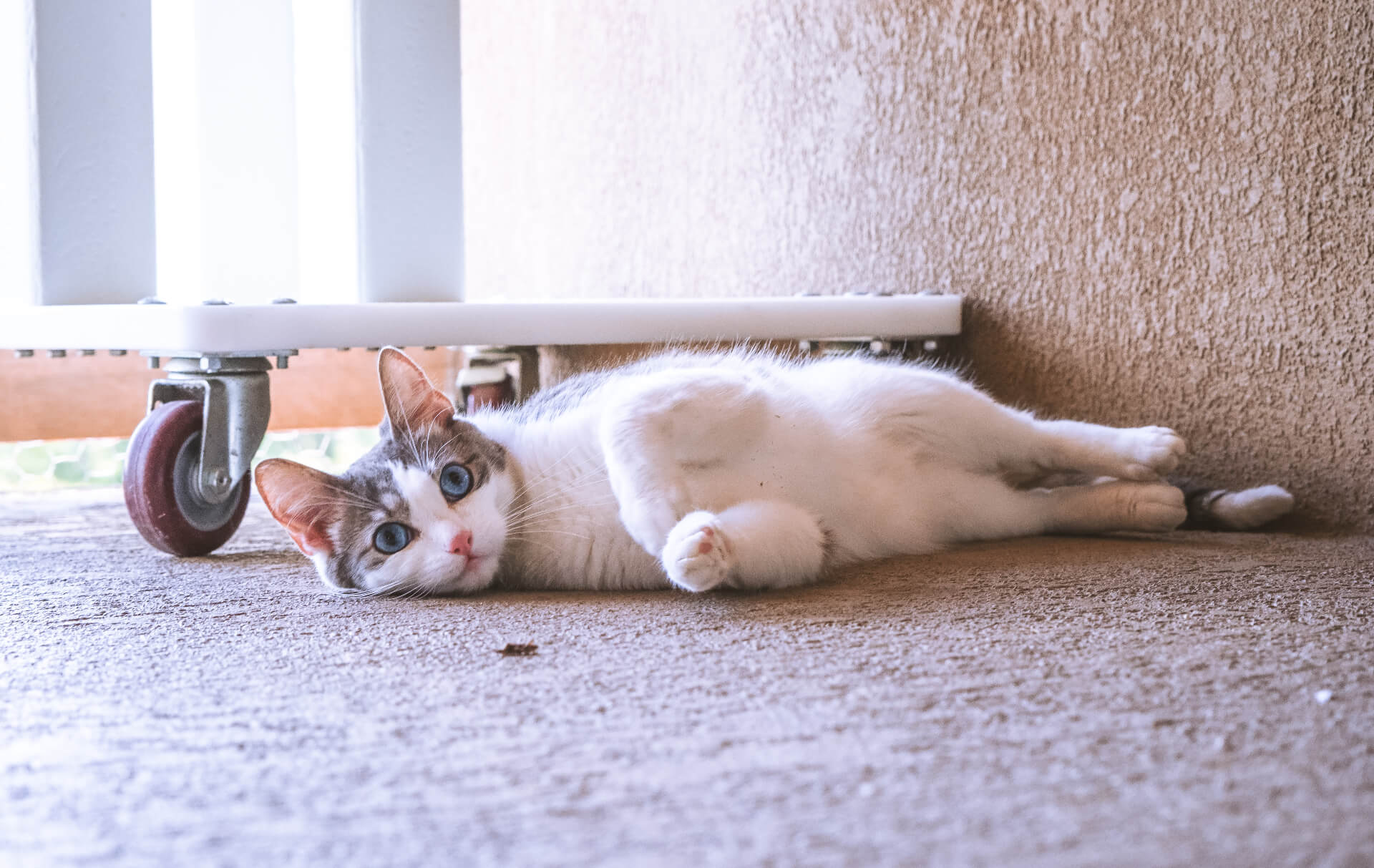
New Cat Introduction
Cats do not typically like change. In order to help your cat transition into her new life we recommend that you start by putting her in one room. This could be a bedroom, bathroom, laundry room, or other small space. You want her to be contained, have places to hide and perch, and to have all of her items accessible (food, water, litter box, bed, scratching post, toys). How long your cat spends in this room will depend on how quickly she adjusts to change. Confident cats may be ready to leave their room within a week but most cats may take two weeks or more. When she is comfortable in this room, coming out of hiding, and curious about what is on the other side of the door it is time to let her explore the rest of the house. If she is frightened she may run back to her room, but over time she will explore all of her new territory and become comfortable there.
Introducing Your Cat To The Other Pets
- The switcheroo – Give your cat a day or two of uninterrupted time to settle in outside of basic care and play with you. After those few days, while your new cat is isolated to one room, switch bedding between her and the resident pets. Cats explore their world through scent just as much as sight. If she is comfortable with the smells of the other pets she is less likely to be fearful or confrontational when she finally sees them.
- Positive associations – Help all of your pets to learn to associate the other pets with good things. Feed them delicious snacks on opposite sides of the new cat’s door. Spread catnip on bedding that another pet has slept on. Anything you can do to associate the sight, smell, or sounds of the other pets with good things will help the introduction to go more smoothly.
- Letting your new cat out of isolation – When your new cat is ready to venture out of her isolation room, put the other animals away so that she can explore the new territory without coming face to face with another pet. You want to have her discover one new thing at a time in order to avoid being overwhelmed by change.
- The introduction – If at all possible, put a see-through barrier (such as a window, screen, or baby gate) in the door of your cat’s isolation room. This allows the pets to see one another but not have physical contact. Continue to use extra-tasty treats (canned cat food or tuna), attention, catnip, etc. to show the pets that the other animal being around is a good thing. See our other two handouts about introducing pets.
- Out and about – When you are comfortable allowing the pets to mingle without a barrier be sure to supervise their interactions. Cats will not “work it out” and any fighting is likely to escalate if you don’t intervene. If you see a stand off or aggressive behavior try to interrupt and distract the cats with positive things (baby talk, treats, toys, etc.). You may have heard to use a squirt bottle or to shake a can of pennies if cats are having a standoff, but this can cause pets to form negative associations with each other. We encourage using more positive distractions to break the tension because aversive tools may add to the tension the pets are having about one another, like toys, treats, or play.
When Things Go Wrong
- Cat fight – Hopefully you will be able to prevent any serious altercations by using the steps above, supervising your pets, and using distractions to diffuse any tense moments. However, if your new cat starts to fight with the other animals, re-isolate your new cat and go through the process more slowly.
- One animal pestering another in play – Sometimes what started as a game of chase becomes one sided and unfair to the animal being chased. If you feel that one pet is pestering the other pets in play then look for ways to provide enrichment and games that are more appropriate. Dogs can benefit from basic training exercises, food toys, and more physical exercise. Cats can benefit from food toys, interactive toys, and games that fulfill their desire to stalk and chase.
- Stress relief – Some pets cope with change well and others want to hide under the bed for weeks. If any of your pets have a hard time dealing with change, consider the use of a stress relief product. If you have a multi-cat household consider putting calming collars on all the cats. These will provide stress relief as well as give all of the cats a similar smell. Cats recognize and maintain their social group through scent so if they all smell similar to begin with it can help with the introduction process.
